Condition or Copy or the or Description (Over 75,480,000 results)
Product Type
- All Product Types
- Books (74,607,735)
- Magazines & Periodicals (124,509)
- Comics (59,614)
- Sheet Music (51,150)
- Art, Prints & Posters (344,123)
- Photographs (78,954)
- Maps (66,164)
-
Manuscripts &
Paper Collectibles (154,571)
Condition
Binding
Collectible Attributes
- First Edition (4,743,176)
- Signed (892,966)
- Dust Jacket (3,375,380)
- Seller-Supplied Images (20,021,819)
- Not Printed On Demand (60,607,476)
Free Shipping
Seller Location
Seller Rating
-
Timeless Masterpiece American Brass Dial Clocks
Published by Hohmann Holdings LLC, New York, 2009
ISBN 10: 0978968913ISBN 13: 9780978968915
Seller: Bookplate, Chestertown, MD, U.S.A.
Book First Edition
Hardcover. Condition: Near Fine. Dust Jacket Condition: Very Good. 1st Edition. Clean, unmarked copy with sharp corners, firm hinges, crisp pages, clean boards. DJ rub to front and back singular flaw. BP/Antiques/Clocks.
-
PRIVATE LIBRARY/ ARCHIVE/LIFE ART PROJECT//NUDEL BKS CIRCLE/(circa 20 to 30 thousand books, art, photos & manuscripts)
Seller: NUDEL BOOKS, New York, NY, U.S.A.
First Edition
Hardcover. Condition: Good. 1st Edition. One of the most important & eclectic private libraries & collections in America, circa 20 to 30 thousand items (who's counting) books, my manuscripts & others, (copy rights are a separate issue,) art, photos,my internet writing, dust & dreams included. The life work of the legendary exile deep under the underground Jewish-American poet/artist who has spent almost 50 yrs eating thru the endless intestines of the SOHO beast. Among his raft of accomplishments: he's most proud that he has never read at St Marks, taught at Naropa OR read to a Jazz background, He is the last true poet of the beat generation sz Ted Joans the Pope of the beats. Much material of&on the NUDEL BOOKS CIRCLE (this naming is purely descriptive and neither implies or makes the claim that NDL is at the center of this circle.) Housed in two Manhattan condo apartments (one overlooking De Koonings studio & one staring at the Empire State, one loft, on the most expensive commercial block in Soho, thus NYC, thus USA thus THE WORLD, & three separate storage spaces, with at least one hundred boxes of material unsorted for decades. We will only sell to a private buyer who will donate the collection to the HEBREW UNIVERSITY IN JERUSALEM (will fit neatly between the Einstein and Kafka Papers) Hebrew U. can then donate or work with other institutions to share & exhibit the collection. We will be available with a doctorate and 50 yrs experience to affirm for tax purposes that the collection is severely under valued.Serious inquiries only, no discounts, no haggling. Moved by buyer who will provide funds for support. At least a quarter of the proceeds will be donated to Israeli causes, promoting the integration of African Jews into Israeli Society,support for lone soldiers in the IDF, collaborative, non political po art projects between Muslim & Jewish Israelis. The NDL CRCL encompasses in small part:Lori,Lorraine Reinstein, Steve Dalachinky, Erik La Prade, Bob Creeley, Ted Joans, Robert Frank.Tuli Kupferberg, Clayton Patterson, Kyle Void, Jonas Mekas, Alan Kaufman,Gerard Malanga, Robert Quine, Tram Coombs, Charles Henri Ford, Ed Clark, David Hammons, Jonathan Demme, Nam Jun Paik,David Matlin, Adam Davis, Jack Micheline,Jackie Brookner, Paul Morrissey, Jaap Reitman, Adnan Sirhan, Gait Froge, Thurston Moore,Etan Patz, Richard Hell, Buddy Wirtschafter, George Whitman,Carter Burden, Paul Blackburn, John Logan, Richard Foreman & Kate Manheim, June Leaf,Susan Sontag,Adrian Piper, Erica Jong.Simone Forti, Arlene & Jessica Jordan, Julie Garfield,Maggie Newman Thelma Blitz, Raschid Ali, , D.J.Spooky, Matt Shipp, Charles Gayle,James 'Blood' Ulmer, John Farris & & in absentia the spirits of Margaret Bonds & Langston Hughes. The perfect adjunct to the Morgan Library for the Soho Generation, for the Tenement Museum on how later immigrants lived & altered Industrial Loft Space, for the Grolier Club: collecting on a short shoe string, for the Tel Aviv Museum of art for the diasporic Yid post holocaust experience, for the German National Lib. & its exile collection, for the Schomburg Center & The Studio Museum on the interaction of Jews/Blacks during SOHO'S go go yrs, for the Jewish Museum, Yid Peddlars:ART&PO, Tuli/Dalachinsky/NDL, for The Museum of the City of NY, Street vs Castelli: street artists NDL TO HMMNS to SAMO, the Soho yrs. This last will&testament is not an encomium NDL ( born 75 yrs ago 40 miles from Auschwitz in a D.P. 'lager') but for those Polish Jews, my mother, father, uncle & aunts, grand mother, grand father & their friends( those who survived the Siberian Death Labor Camps & those who didn't )without whose unrelenting hard work, courage and determination, & hope for the American Future, none of this collection would have been possible (credit card,check, paypal or cash) Easily the most important modern poets library in existe.
-
Hamaran Huoneet
Published by Helsingissa Kustannusosakeyhtio Otava, Finland, 2011
Seller: P.C. Schmidt, Bookseller, Kettering, OH, U.S.A.
First Edition
Hardcover. Condition: Fine. Dust Jacket Condition: Fine. Edition Not Stated. Text in Finnish; fine hardcover in fine dustjacket; a solid copy; For their protection I cover all dustjackets with a new clear mylar protector; SATISFACTION GUARANTEED; ALL ORDERS SHIPPED WITH DELIVERY CONFIRMATION; Size: 6 x 8".
-
Aves aquatiles advivum eleganter depictae a Petro Holsteyn - Aves ad vivum depictae a Petro Holsteyn celeberrimo pictore.
Publication Date: 1638
Seller: Arader Galleries Drawings & Watercolors, New York, NY, U.S.A.
Hardcover. Condition: Very Good. PIETER HOLSTEYN THE YOUNGER (DUTCH, 1614-1687) Aves aquatiles advivum eleganter depictae a Petro Holsteyn - Aves ad vivum depictae a Petro Holsteyn celeberrimo pictore. Amsterdam: ca 1638 2 volumes, oblong folio (9 1/8 x 14 inches; 8 3/4 x 14 inches). 168 Exceptionally fine original watercolor drawings of birds of the Dutch Empire: The Netherlands, South Africa, Southeast Asia, and the Americas, Painted by the Premier Natural History Artist in the Netherlands of the time, Pieter Holsteyn II. The only example of such an album in private hands. Drawn with superb naturalism: Birds are shown at rest, preening, flying, swimming and diving. Volume I: 9 blank leaves, manuscript title-page, 79 fine original watercolor drawings of waterbirds, including ducks, geese, swans, heron, grebes, pelicans, puffins, penguins and auks, each initialed by Holsteyn PH fc , interleaved with blank leaves which are in 42 instances annotated in a contemporary hand with the name of the bird preceding it, 6 of the illustrated leaves are similarly annotated lower right, and many of the leaves, both illustrated and blank have partial manuscript page numbers in the center of the top edge, followed by a further 16 blank leaves, watermarked crowned Stasburg lily WR for Wendelin Riehel, according to Churchill created from 1636, (the last of which is torn with loss to the fore-edge); Volume II: 7 blank leaves, manuscript title-page, 89 fine original watercolor drawings of shore-birds, herons, songbirds, exotic pheasants, peacocks, hummingbirds, birds of paradise, cockerels, toucans, spoonbills, parrots, cockatoos, parakeets and one of the earliest depictions of a DODO, each initialed by Holsteyn PH fc, interleaved with blank leaves which are in 66 instances annotated in a contemporary hand with the name of the bird preceding it, many of the illustrated leaves are similarly annotated lower right, 10 blank leaves. Uniformly bound in near contemporary full Dutch vellum over paste-board, each cover decorated in panels with gilt filets and decorated at the innermost corners with tulip and rose tools surrounding a central arabesque medallion, the spines in five compartments with four raised bands, the titles in the second, the others decorated with fine gilt rose tools, all edges gilt (volume I worn with loss to the spine an upper left-hand corner of the front cover, edges gnawed by rodents, each lacking two pairs of green silk ties). Roger Pasquier, ornithologist and art historian has written of the Holsteyn albums: The 168 paintings depict 81 species and another 30 hybrids and avicultural varieties. Each painting is a portrait showing a single bird in with a few exceptions full profile. Some face left, others right. The birds and their simple landscape base are each about 7 by 8 inches, a few larger. The wild birds include many common in the Netherlands as well as a wide range of species from other hemispheres where the Dutch had established colonies and trading posts. The portraits of avicultural varieties reveal an interest in experimentation in hybridizing different wild birds, especially ducks, and in selecting for unusual features in parrots and in barnyard fowl. The album depicts a remarkable number of albino birds, from peafowl and pheasants to ducks, that long before any formal knowledge of genetics were the result of very selective breeding. "The bird portraits also reflect a youthful curiosity and perhaps even a prankish spirit; a few of the birds are unidentifiable, either imaginary or clearly composites of different species that could never have met. We can also distinguish by their posture or animation the birds Holsteyn would have known in life, either by common observation or visiting a private menagerie, from those he drew from stuffed specimens that must have been part of a specialist s collection. CONTACT US FOR A FULL DESCRIPTION Loca: 6.3BC.20D.
-
1812.DONOVAN R.E. 1980 HUNTING WILD BEES. 184PP. ILLUSTRATED. HARD COVER WITH A DUST JACKET. GOOD CONDITION. (GNH-BASE-122).
-
13422 GELDOF B. 1986 IS THAT IT? THE AUTOBIOGRAPHY. 360PP. ILLUSTRATED. HARD COVER WITH A DUST JACKET. LIKE NEW CONDITION. FIRST AMERICAN EDITION (BS-494).
-
De Revolutionibus Orbium Coelestium, Libri VI
Seller: Jonathan A. Hill, Bookseller Inc., New York, NY, U.S.A.
First Edition
147 woodcut diagrams in the text. 6 p.l., 196 leaves. Small folio (272 x 190 mm.), cont. Parisian binding of light brown calf (very skillful restorations to the binding), panelled in blind with gilt fleurons in the corners, gilt floral tool in the center of each cover of a hand holding flowers, small gilt stars in the six compartments of spine. Nuremberg: J. Petreius, 1543. First edition, and a very fine and crisp copy, of "the earliest of the three books of science that most clarified the relationship of man and his universe (along with Newton's Principia and Darwin's Origin of Species)."-Dibner, Heralds of Science, 3. This work is the foundation of the heliocentric theory of the planetary system and the most important scientific text of the 16th century. This is the seventh or eighth copy I have handled over the past 39 years. How does it compare to the others? Quite nicely. First of all, this is one of the largest copies extant; simply, this copy is really big. Also, I have had only one other copy in a 16th-century binding (Census I.245). Our binding, while carefully and skillfully repaired, is a very beautiful contemporary Parisian example; the tool of a hand holding flowers in the center of each cover is very similar to the one used on many of Marcus Fugger's plain calf bindings. It is a lovely tool in general use by the Paris binders of the period 1550-1560. The endpapers have been renewed but they are not offensive. There is a small early erasure of an ownership inscription on the title just slightly touching the "D." in the date. The first six leaves have some light dampstaining but it is pale. Provenance: At the foot of the title-page, another early signature has been thoroughly lined through. 17th- or 18th-century ownership inscription on title: "Collegii Parisiensis Societat jesu." -Bookplate of Gustavus Wynne Cook (1867-1940, amateur astronomer, collector, and benefactor of the Franklin Institute). -Franklin Institute Library bookplate. -Sold Sotheby Parke-Bernet, New York, 2 November 1977, lot 85, to the British Railway Pension Fund (a famously selective buyer). -Purchased by Pierre Berès at Sotheby's London, 21 October 1980 and sold to a prominent Spanish private collector. A very large, fresh, and crisp copy (the leaves "crackle"). Preserved in a morocco-backed box. Collation as in Horblit; some copies - about 20 per cent according to Prof. Gingerich - contain an errata leaf printed separately and later. â § Evans, Epochal Achievements in the History of Science, 15. Gingerich, An Annotated Census of Copernicus' De Revolutionibus, Madrid 7. Gingerich, Rara Astronomica, 16. Horblit 18b. Printing & the Mind of Man 70-"a landmark in human thought. It challenged the authority of antiquity and set the course for the modern world by its effective destruction of the anthropocentric view of the universe." Sparrow, Milestones of Science, 40. Zinner 1819 & p. 42.
-
De revolutionibus orbium coelestium libri VI : habes in hoc opere iam recens nato, & ædito, studiose lector, motus stellarum, tam fixarum, quàm erraticarum, cum ex ueteribus, tum etiam ex recentibus obseruationibus restitutos : & nouis insuper ac admirabilibus hypothesibus ornatos : habes etiam tabulas expeditissimas, ex quibus eosdem ad quoduis tempus quàm facilli me calculare poteris : igitur eme, lege, fruere
Published by Johannes Petreius, Nuremberg, 1543
Seller: Liber Antiquus Early Books & Manuscripts, Chevy Chase, MD, U.S.A.
First Edition
Hardcover. Condition: Fine. Bound in attractive, contemporary Parisian calf with some discreet repairs. The boards are blind-ruled and adorned with gold-tooled ornaments. This is one of very few to have appeared on the market in a contemporary binding. The text is in excellent condition, with just minor blemishes (small early erasure of an ownership inscription on the title just slightly touching the "D." in the date. Light damp-staining to first six leaves.) Collation as in Horblit; this copy without the errata leaf -printed separately and later- that is found in a minority of copies (about 20 percent). Preserved in a morocco-backed box. Provenance: At the foot of the title-page, an early signature has been thoroughly lined through. 17th- or 18th-century inscription on title of the Jesuit College of Paris. Bookplate of Gustavus Wynne Cook (1867-1940, amateur astronomer, collector, and benefactor of the Franklin Institute). Franklin Institute bookplate. Soldat Sotheby Parke-Bernet, New York, November 1977, lot 85. Purchased by Pierre Berès at Sotheby's London, 21 October 1980 and sold to a prominent Spanish private collector. "The earliest of the three books of science that most clarified the relationship of man and his universe (along with Newton's Principia and Darwin's Origin of Species)."-Dibner, Heralds of Science, 3. This work is the foundation of the heliocentric theory of the planetary system and the most important scientific text of the 16th century. Copernicus began to work on astronomy on his own. Sometime between 1510 and 1514 he wrote an essay that has come to be known as the Commentariolus that introduced his new cosmological idea, the heliocentric system, and he sent copies to various astronomers. He continued making astronomical observations whenever he could, hampered by the poor position for observations in Frombork and his many pressing responsibilities as canon. Nevertheless, he kept working on his manuscript of On the Revolutions. In 1539 a young mathematician named Georg Joachim Rheticus (1514-1574) from the University of Wittenberg came to study with Copernicus. Rheticus brought Copernicus books in mathematics, in part to show Copernicus the quality of printing that was available in the German-speaking cities. He published an introduction to Copernicus's ideas, the Narratio prima (First Report). Most importantly, he convinced Copernicus to publish On the Revolutions. Rheticus oversaw most of the printing of the book, and on 24 May 1543 Copernicus held a copy of the finished work on his deathbed. It is impossible to date when Copernicus first began to espouse the heliocentric theory. Had he done so during his lecture in Rome, such a radical theory would have occasioned comment, but there was none, so it is likely that he adopted this theory after 1500. His first heliocentric writing was his Commentariolus. It was a small manuscript that was circulated but never printed. We do not know when he wrote this, but a professor in Cracow cataloged his books in 1514 and made reference to a "manuscript of six leaves expounding the theory of an author who asserts that the earth moves while the sun stands still" (Rosen, 1971, 343). Thus, Copernicus probably adopted the heliocentric theory sometime between 1508 and 1514. Rosen (1971, 345) suggested that Copernicus's "interest in determining planetary positions in 1512-1514 may reasonably be linked with his decisions to leave his uncle's episcopal palace in 1510 and to build his own outdoor observatory in 1513." In other words, it was the result of a period of intense concentration on cosmology that was facilitated by his leaving his uncle and the attendant focus on church politics and medicine. In the Commentariolus Copernicus listed assumptions that he believed solved the problems of ancient astronomy. He stated that the earth is only the center of gravity and center of the moon's orbit; that all the spheres encircle the sun, which is close to the center of the universe; that the universe is much larger than previously assumed, and the earth's distance to the sun is a small fraction of the size of the universe; that the apparent motion of the heavens and the sun is created by the motion of the earth; and that the apparent retrograde motion of the planets is created by the earth's motion. Although the Copernican model maintained epicycles moving along the deferent, which explained retrograde motion in the Ptolemaic model, Copernicus correctly explained that the retrograde motion of the planets was only apparent not real, and its appearance was due to the fact that the observers were not at rest in the center. The work dealt very briefly with the order of the planets (Mercury, Venus, Earth, Mars, Jupiter, and Saturn, the only planets that could be observed with the naked eye), the triple motion of the earth (the daily rotation, the annual revolution of its center, and the annual revolution of its inclination) that causes the sun to seem to be in motion, the motions of the equinoxes, the revolution of the moon around the earth, and the revolution of the five planets around the sun. The Commentariolus was only intended as an introduction to Copernicus's ideas, and he wrote "the mathematical demonstrations intended for my larger work should be omitted for brevity's sake.". In a sense it was an announcement of the greater work that Copernicus had begun. The Commentariolus was never published during Copernicus's lifetime, but he sent manuscript copies to various astronomers and philosophers. He received some discouragement because the heliocentric system seemed to disagree with the Bible, but mostly he was encouraged. Although Copernicus's involvement with official attempts to reform the calendar was limited to a no longer extant letter, that endeavor made a new, serious astronomical theory welcome. Fear of the reaction of ecclesiastical authorities was probably the least of the reasons why he delayed publishing his book. The most important reasons for the delay.
-
Manifest der kommunistischen Partei. Veröffentlicht im Februar 1848.
Published by London, gedruckt in der Office der "Bildungs-Gesellschaft für Arbeiter" von J. E. Burghard. 46, Liverpool Street, Bishopsgate, [1848]., 1848
Seller: Antiquariat INLIBRIS Gilhofer Nfg. GmbH, Vienna, A, Austria
First Edition
8vo (205 x 137 mm). 23 pp., 1 blank p. (after which are bound 20 blank leaves). Contemporary marbled half cloth with giltstamped spine rules and title "Marx, Manif. und Katech". The founding document of communism: a previously unknown copy of the extremely scarce first issue of the first edition, owned by a Rhenish councillor of justice in the 1860s. - Of this first printing, only 27 copies are known worldwide: the 26 enumerated in Kuczynski's census and one more, sold in Hamburg in 2001. So rare is it that Kuczynski's statement, made in 1995, today requires almost no qualification: "In vain will specimens of the first edition of the 'Manifesto' be sought in the world's great libraries. Neither the Library of Congress in Washington nor the Lenin Library in Moscow, neither the British Museum in London nor the Bibliothèque nationale in Paris, not the Vatican's Biblioteca Apostolica nor Berlin's Staatsbibliothek own a copy. All that is left is held by specialist historical libraries or archives, was acquired in passing with posthumous papers or bought and sold by private collectors" (cf. p. 78). - Previous to this copy, only four examples passed through the international postwar book trade: that formerly in the collection of Salman Schocken (Kuczynski B6c: Hauswedell 211 [1976], lot 574 = Christie's Paris, 2008, lot 12); that of Eduard Wiss (B4-6b: Sotheby's 1986, lot 159 = Christie's 1991, lot 314); the Rehdiger copy (B5b: Sotheby's 2006, lot 93); and a copy unknown to Kuczynski (Hauswedell 356 [2001], lot 428). Excepting the Schocken copy, which was acquired by the British Library, none of these recently-surfaced specimens went to institutional collections, and to this date the BL remains the only major research library in the world that has succeeded in acquiring the much-coveted first edition of what is universally admitted to be "one of the outstanding political documents of all times" (PMM). Even the great Karl Marx exhibition held in 2018 at China's National Museum in Beijing to mark the 200th anniversary of Marx's birth, as well as the Chinese National Library's 2021 exhibition, dedicated specifically to the Communist Manifesto and co-hosted by the CPC's Zhejiang Provincial Committee, were unable to source a copy, although the 2021 exhibition showed no fewer than 306 versions of the book in 55 languages. - Quite insignificantly and evenly browned throughout due to paper stock. Pages 7-10 trimmed fairly closely at the lower edge by the binder's knife, leaving the last line of page 7 slightly shaved (minimal loss but still legible) and descenders of "g" and "z" barely touched on page 8. Minute paper abrasion to the word "aufgehoben" in the last line of page 14; the printed letters transferred to the opposite blank margin. A small browned rectangle in the gutter of pp. 14/15 (ca. 3.5 cm), apparently due to formerly inserted small slip of paper; light offsetting from the original ribbon bookmark on pp. 18/19. Altogether in excellent condition, showing the characteristics of variant B4-6 as called for by Kuczynski: 23 pages, p. 17 numbered correctly, misprint "heraus beschwor" in the last line of p. 6; cover variant undeterminable (but traces of the original green wrapper's colour are evident in the gutter of the title). Tantalizingly, the entirely contemporary binding's spine title reads "Marx, Manif[est] und Katech[ismus]": an uncanny echo of the work's catechetical form as originally envisaged by its authors, before Engels, in November 1847, suggested the word be abandoned in favour of "Manifesto". Is this a mere misreading of the title by the bookbinder - or was he possibly himself a member of the "Bund der Kommunisten" who was acquainted with the genesis of the work and Engels's "Communist Confession of Faith", as the draft version of the Manifesto was called? - From the library of the Elberfeld district court councillor and justice Peter Kremer with his autograph ownership in blue ink to the flyleaf, noting the edition's rarity even then: "Selten. // P. Kremer / Elberf. 14/3. [18]63". Latterly in a Rhenish private collection. - Andréas no. 1 & pp. 11f. Kuczynski, Das kommunistische Manifest (Trier, 1995), p. 87, variant Bu23 B4-6. Rubel p. 63, no. 70.1. ME-Erstdrucke p. 14, no. (1). PMM 326. Auvermann/Reiss/Sauer p. 13. Adams p. 50.
-
A Plan of the Progress of the Royal Army from their Landing at Elk Ferry to Philadelphia 1777 Under the Command Of His Excellency, Sir William Howe Knight of the most Honorable Order of the Bath, Commander and Chief
Published by Surveyed and Drawn by Order of Major General Sir William Erskine by Charles Blaskowitz Capt. of the Corps Guide, 1778
Seller: Arader Galleries of Philadelphia, PA, Philadelphia, PA, U.S.A.
Book
No Binding. Condition: Very Good. Charles Blaskowitz (c.1743- 1823) A Plan of the Progress of the Royal Army from their Landing at Elk Ferry to Philadelphia 1777 Under the Command Of His Excellency, Sir William Howe Knight of the most Honorable Order of the Bath, Commander and Chief Surveyed and Drawn by Order of Major General Sir William Erskine by Charles Blaskowitz Capt. of the Corps Guide Published Philadelphia, 1778 On laid paper, mounted on linen Size: 51 3/8 x 53 1/8¿ Blaskowitz¿s map presents a highly accurate and detailed description of southeastern Pennsylvania and the adjacent parts of Maryland, Delaware and New Jersey. All rods and villages are illustrated with ink and watercolor. A detailed topographic projection crosses the lower half of the map moving northwards from the head of the Chesapeake Bay to Philadelphia. This marks the route of the British army as it progressed against determined Continental resistance to seize the American capital in September 1777. The site of the two large field battles, Brandywine and Germantown, are illustrated, as is the siege of Fort Mifflin in the Delaware River. Daily progress is tracked, and its locations of country taverns and meetinghouses are labeled, while crossed swords indicate the locations of skirmishes and red bars show the placement of brigades. It is a complete rendering of the dramatic sequence of events as they occurred from August to December 1777. The areas in the vicinity of the route of the British armies are rendered in full topographical detail, while the remainder of the map takes on the form of a road and administrative map. As indicated on the title, Blaskowitz drafted the map under the orders of Major General Sir William Erskine (1728-1795), one of the most highly regarded commanders in the British Army. At the time it was created, it was likely the most detailed and precise map of southeastern Pennsylvania. The map is a detailed record of the British campaign to take Philadelphia, the capital of the United States, during the late summer and autumn of 1777.
-
1535 Coverdale Bible: First Edition, First Issue of the First Printed Bible in English
Publication Date: 1535
Seller: Crawford Sterling Rare Books and Manuscripts, Munford, AL, U.S.A.
First Edition
Hardcover. Condition: Fine. 1st Edition. Biblia. The Bible, That Is, the Holy Scripture of the Olde and New Testament, Faithfully and Truly Tranlsated out of Douche and Latyn in to English [Cologne: Eucherius Cervicornus (pts. 1 2, 6) and Johannes Soter (pts. 3 5)] 4 October 1535; [Preliminaries (first quire) printed at Southwark: James Nicolson, 1535 or 1536]. A pristine copy of the first edition, first issue of the first printed Bible in English; with an extraordinary provenance. Appraised at $1.75 million USD in March of 2020 ($2+ million USD, adjusted for inflation), it is the finest known copy in private hands. Apart from a lesser example in our own inventory (priced accordingly), at the time of this listing - it is further distinguished as being the only copy currently available worldwide. Folio (12 1/2 x 7 7/8 in.; 311 x 200 mm). Text in double columns, black letter (English for preliminaries, Schwabacher for the text with roman for marginalia and disputed words), general title within woodcut border attributed to Hans Holbein the Younger (McKerrow & Ferguson 31), separate titles within woodcut borders composed of eight blocks (with some repeats) for parts two (The seconde parte of the Olde Testament) and four (All the Prophetes in Englishe) of the Old Testament, the Apocrypha and the New Testament, each with separate registers and foliation (as well as for the Book of Job which has a drop title), 158 woodcut illustrations made from 68 woodblocks derived from designs by Hans Sebald Beham (which first appeared in a Bible printed at Frankfurt by Christian Egenolff, 1534), woodcut and flourished gothic script initials. Black morocco, spine in six compartments lettered gilt, gilt-ruled turn-ins, edges gilt. Please contact us for additional information, together with an expanded collation report.
-
Leather. Condition: Fine. Test description.
-
An East Prospect of the City of Philadelphia: taken by George Heap from the Jersey Shore, under the Direction of Nicholas Skull [sic] Surveyor General of the Province of Pennsylvania
Published by Engraved by G. Vandergucht, [London], 1754
Seller: Arader Books, New York, NY, U.S.A.
Map First Edition
No binding. Condition: Near fine. First. "THE MOST DISTINGUISHED OF ALL PRINTS OF THE CITY OF PHILADELPHIA" [London:] Engraved by G. Vandergucht, Sep.br 1.st 1754. First state ("Skull" for "Scull" twice on sheet 3). Four sheets (ca. 29 1/2" x 23 1/2" each). Framed floating. An old transverse crease about 9" below the top edge, reinforced verso. Some small repairs to the sky. Tanning at the corners from an early mount. With good upper and lower margins throughout; sheets 1-3 trimmed to right-hand plate-mark; sheet 4 trimmed to left-hand plate-mark. Occasional very mild patches of tanning. An extraordinary set. From its founding in 1680 between the Delaware and Schuylkill Rivers, Philadelphia was strategically poised to be a hub of trade. By the mid-XVIIIc it had become the major Atlantic port, fueling a golden age of growth and eminence in the arts and sciences -- the Athens of America. The Penn family had long dominated the colony, and Thomas Penn, the founder's son, commissioned a grand view of the city in 1750 to commemorate and to enhance its stature (the Penn arms at the lower left corner of the third plate underscore their dominance). George Heap undertook the project; he had been Philadelphia's coroner. The ambition of the project matched the city's stature: it was the grandest illustrated view of an American city that had ever been attempted. Nicholas Scull (perhaps an uncle by marriage) superintended the work, and Heap began advertising for subscribers (20 shillings, 10 payable in advance) and with that money set sail for England (there being no means to print it in Philadelphia) with his drawings. Heap got only as far as Delaware, and died on-board; he was buried in Philadelphia on Boxing Day 1752. Thereafter Scull shepherded the vast work through the engraving and publishing process. The Dutch engraver Gerard Vandergucht was commissioned to cut the plates, which finally emerged in June of 1754 (the King hung it in his own apartments). Wainright begins his article on the prospect by hailing it as "the most distinguished of all prints of the city of Philadelphia in terms of age, rarity, and historic importance." In 1755 the view was shrunk by about two-thirds, and placed above a plan of the city and a view of the state house and the batter, engraved by Thomas Jefferys. This is far more common; of the Heap-Scull-Vandergucht view we have located only six copies in institutional collections: the American Philosophical Society (.748:P53:1754), Haverford College, Colonial Williamsburg, the Historical Society of Pennsylvania (second state), Independence National Historic Park and the New York Public Library (Stokes Collection, second state). Deák I:99 (second state). See Wainright, Nicholas B. "Scull and Heap's East Prospect of Philadelphia" in The Pennsylvania Magazine of History and Biography 73, no. 1 (January 1949) 16-25.
-
Forma y Levantado de La Ciudad de Mexico. Anno 1628" An eastward view of Mexico City in pen and ink and watercolor over black chalk An eastward view of Mexico City in pen and ink and watercolor over black chalk.
Publication Date: 1665
Seller: Arader Books, New York, NY, U.S.A.
Map First Edition
No binding. Condition: Fine. First. AN EPOCHAL MANUSCRIPT WATERCOLOR VIEW --THE FIRST CHOROGRAPHIC REPRESENTATION OF MEXICO CITY -- THE ONLY COPY OUTSIDE INSTITUTIONAL COLLECTIONS. "Anno 1628" [Amsterdam, ca. 1665.] Two sheets joined (20 1/2" x 29"; 16" x 21 1/4" to the neat line). Watermark: a shield with a bear, coronetted (i.e., Bern, Switzerland). In 1521 the kingdom of New Spain was founded. Its capital was the former capital of the Aztec Empire, Tenochtitlan, renamed to Mexico City. Keeping the old capital was convenient for a variety of reasons, but it was not without challenges: since it was ringed by lakes at the bottom of a valley, the city was prone to seasonal flooding. For well over a century attempts were made to mitigate this flooding; this view of the city was made as part of that process. Juan Gómez de Trasmonte (d. 1647) was master builder and one of the architects of the Metropolitan Cathedral in Mexico City. After the failed attempts of Enrico Martínez in 1629, there was a massive and catastrophic flood that paused construction of the cathedral (it can be seen partly-constructed just Norh of the Plaza Mayor (Zócalo)), and Trasmonte superintended various projects to manage water in the city. Illustrating the present item, Priscilla Connolly and Roberto Mayer argue that the Trasmonte view "clearly had persuasive intentions," viz. he shows "the lakes not as an insuperable problem that have to be drained, but as a natural feature that the city can enjoy if afforded sufficient protection" (op. cit. 55, 57). The iconography of the map, showing the lake as placid and its shores verdant, is crucial to Trasmonte's proposal: implementing a series of dykes and canals in order to regulate the flow of water. Trasmonte's view is here present in a watercolor copy by the Dutch artist and cartographer Johannes Vingboons (1616/17-1670), who from 1640 was employed by the cartographic publisher Joan Blaeu. How did he come to possess the original in Amsterdam? Connolly-Mayer proposes a swashbuckling tale involving the capture of the Spanish Flota on 8 September 1628 by the Dutch privateer Piet Hein (ibid., 59-60), who worked for the Dutch West India Company. Vingboons's father, David Vinckboons, was commissioned to paint oils (destroyed in WWII). Six of Vingboons's copies of his father's copies of the view of Mexico City are known: in the Vatican Library's "Christina atlas", among the "Carte di Castello" at the Biblioteca Medicea Laurenziana in Florence, in the "Blaeu-van der Hem" atlas in the ÖsB Vienna (authorship disputed), two unfinished versions at the BnF (authorship disputed) and the present item. The present item was, we believe, part of the "Van Keulen/Bom atlas," which belonged to descendants of the great cartographic publishing firm of Van Keulen, and was broken and disbursed in 1885. The so-called "secret atlas" of mostly unpublished maps for the VOC was a trove of valuable cartographic data; very faint grid-lines present on our copy indicate that some attempt was made to prepare it for publication, though it never was. This belief is strengthened by the manuscript "7" at the upper right-hand corner of the map, which matches numeration in other maps from the Van Keulen/Bom atlas. Connolly-Mayer explain that one of the authors was contacted by a Mexican collector with the views (ours is their color plate 6), who explained that his father had bought them in Antwerp shortly after 1946 (ibid., 49). It is difficult to overstate the importance of such a view historically and artistically. Vingboons's manuscript work was sought by royalty (Queen Christina Alexandra of Sweden, Cosimo III de' Medici) as the other known copies attest. Even into the Dutch golden age of mapmaking, the sensitivity and nuance of watercolor was prized above the repetitive accuracy of engraving. Connolly, Priscilla and Roberto Mayer. "Vingboons, Trasmonte and Boot: European Cartography of Mexican Cities in the Early Seventeenth Century." Imago Mundi 61, no. 1 (2009) 47-66.
-
Carte nouvelle de la partie de l'Ouest de la Loüisianne faitte sur les observations, recherches, et decouvertes de Mr Benard de la Harpe l'vn des Commandants au d(it) Paÿs faitte sur les observations, recherches, et decouvertes de Mr Benard de la Harpe l'vn des Commandants au d(it) Paÿs
Published by Dépôt des cartes et plans de la Marine, [Paris], 1722
Seller: Arader Books, New York, NY, U.S.A.
Map First Edition
No binding. Condition: Near fine. First. THE MOST IMPORTANT 18TH-CENTURY MAP OF THE AMERICAN SOUTHWEST. Manuscript map in ink and watercolor of the southern United States and northern Mexico. [Paris: ca. 1722-1725.] Two joined sheets (22 5/8" x 36 3/4", 575mm x 933mm; 31 3/4" x 45 3/4" framed). Some creases throughout, with marginal tanning and soiling. A couple of spots of foxing. Jean-Baptiste Bénard de La Harpe (1683-1765) came from France in 1718 to map and to set up trading posts in present-day Texas, Oklahoma and Arkansas. Whereas the Northeast was the site of contention between the French and the British, the contest in the Southwest was between France and Spain. Using New Orleans as his base, La Harpe forged connections with native Americans between the Arkansas River, which cuts through Kansas, Oklahoma and Arkansas before joining the Mississippi; and the Red River, which describes the border between eastern Oklahoma and Texas. The map is particularly detailed in its chronicling of native American settlements west of Texas: the Mexican states of Chihuahua and Sonora, New Mexico, Arizona and California into Baja California. La Harpe is particularly careful in his indications of the nature of these settlements: "Indiens Gentils" and "Chretiens," sites of silver mines, capitals/presidios and of ruined or abandoned villages. After several years of exploration as well as gathering materials from other explorers, La Harpe returned to France in 1723, and it is in the years immediately following that this map is presumed to have been made. Copied by the Dépôt des cartes et plans de la Marine (the only other known copy is in the Bibliothèque nationale de France; that is attributed to Jean-Baptiste Bourguignon d'Anville), the relationship between La Harpe's original and the present item is unclear. Certain points appear on our map that are not on the BnF example (and vice-versa), so both appear to be independent copies. Ours extends further east than the BnF copy, which stops before Florida. The BnF copy extends much further north and west, which in our copy is obscured by the legend. By comparison to printed maps of the period and even well beyond, these manuscript maps are far more accurate and detailed. Perhaps the Dépot des cartes held this information close for proprietary or military reasons. Nonetheless, the Spanish would go on to dominate the American South (La Harpe conducted the surrender of Pensacola, visible only on our map, to the Spanish) freeing the French to focus on their territorial struggles with the British in the North and East. From the collection of the late great cartographic historian Dr. Seymour I. Schwartz (his sale, Sotheby's New York, 28 June 2018, lot 145).
-
Manuscript plan of Germantown, Pennsylvania with manuscript descriptions
Published by Germantown, 1686
Seller: Arader Books, New York, NY, U.S.A.
Manuscript / Paper Collectible First Edition
No binding. Condition: Very good. First. THE ORIGINAL PLAN OF GERMANTOWN, THE CRADLE OF GERMAN-AMERICAN IMMIGRATION. Germantown: ca. 1686-1687. Scale ca. 1:12000. Broadsheet (sheet: 15 11/16" x 9 15/16", 399mm x 253mm; ). Map and annotations recto, description of the settlement verso; all in ink. Three folds resulting in eight compartments. Splits and losses at the folds, some repaired. Scattered browning, bleed-through and ink-burn. Pricked for copying. Matted and framed, glassed verso. Franz Daniel Pastorius (1651-ca. 1720) was born in Sommerhausen in the duchy of Franconia, within modern Bavaria in Germany. He received his doctorate in law in 1675 and practiced and taught for a few years before going abroad in 1680, including to England. Upon his return in 1682 he heard of the early Christian settlements in William Penn's Pennsylvania, a promised land of tolerance and abundance. By the 16th of August 1683 he had landed in the New World and befriended Penn himself (at the right-hand side of the map is the annotation in Pastorius's hand: "den Springfield, welches/ Willjam Penns mannor ist" (to Springfield, which is William Penn's manor)). From Penn Pastorius bought land north-northwest of Philadelphia and established Germantown as a dedicated settlement for immigrants from along the Rhine: German, Dutch and Swiss. Here Penn's utopia of religious pluralism came to nourish a multitude of denominations (Lutheran, Mennonite, Quaker, Pietist, Brethren (Dunkers or Dunkards) etc.) and eventually gave birth to the first American condemnation of human bondage: the 1688 Germantown Quaker petition against slavery. The present item is the original map, carried out in Pastorius's own hand, for that foundational settlement (there is text in a second hand as well; it is unclear whose, but it is likely a clerk's). As such, it is among the earliest surviving American town plans (cf. the 1683 Holmes map of Philadelphia), and an unparalleled source of information. The map is oriented with Southwest at the top. Its principle features are the river system in the area, the measured boundaries of the settlement and some internal markings of roads and lots. This last is the subject of the text at the upper right-hand corner of the map: lot-holders' names arranged in spatial order (in the second hand). Given the known dates of lot-holders' arrivals, Duffin dates the map proper to December 1686 or January 1687. The marginalia are later than the map itself: those at the lower edge record some of the history of the settlement as far as Pastorius's election to the mayoralty in or after July 1688, and the lot-holders dates to between August 1688 and March 1689. The verso of the sheet contains a 35-line description headed "Situation der Germantownship in Pennsilvania/ 6 Englishe Meil von Philadelphia gelegen" (the situation of Germantown in Pennsylvania, 6 English miles distant from Philadelphia) written in Pastorius's hand. The text can be dated to late 1687; Pastorius gives the town 5,190 acres, but it was re-surveyed from 29 December 1687 into January of 1688 and found to contain 5,700 acres. In it, Pastorius describes the township's placement in relation to other natural and built land-marks, and finally the lot-holders, with indications of their origins, hereditary rights and extents. The map was owned by Samuel Whitaker Pennypacker (1843-1916), Governor of Pennsylvania and an avid historian and collector of Pennsylvaniana. It was reproduced as illustration 104 in his 1899 Settlement of Germantown (Philadelphia: Campbell) with the notation "From the original in the library of the Author." The Pennypacker sale (eight parts from 1905 to 1909) disbursed a good deal of his collection, but the present item does not appear in that catalogue. A note affixed to the verso of the frame claims that "it is thought to have been Penn's own copy," which is difficult to assess. Duffin, James M. "The First Map of Germantown: A Neglected Source." The Germantown Crier (44.2) Fall, 1992, pp. 4-17.
-
Condition: Fine. The book is in fine condition.
-
Hand-book to the geology of Derbyshire. Illustrated with a geological map and sections. Second edition, revised.
Published by Bemrose and Sons,, 1891
First Edition
viii, 89 p. Folding map with a short tear but no loss, four plates of which three are double page or folding. Publisher's blue cloth, embossed and gilt. Inscription to Peter Embrey on half title. Small rub at the foot of the spine and the cloth a bit dusty. A very good copy. According to the Preface the text is completely re-written from the first edition of 1876.
-
Inventions, Researches & Writings of Nikola Tesla - 1st Edition - Signed
Published by The Electrical Engineer, 1894
Seller: Antiquarian Bookstore, Portsmouth, NH, U.S.A.
Book First Edition
Hardcover. Condition: Good. 1st Edition. "With Special Reference To His Work In Polyphrase Currents and High Potential Lighting" by Thomas Commerford Martin, Editor: The Electrical Engineer; Past-President American Institute Electrical Engineers 1894 The Electrical Engineer, New York. 1st Edition. Frontis Portrait. 496 pp incl. 3-pp Index. Numerous black/white text illustrations. Prominently SIGNED in ink by Tesla on halftitle page: fully guaranteed. Early owner signature of V.G. Converse on 1st blank & same name in stamp on upper right corner of title page. Original light orange cloth binding worn. Contents clean, tight, complete. Original edges un-trimmed. Format 6"x10" Research has found no other copies of the 1st Edition, even un-signed. $1,000,000 (One Million Dollars).
-
Harry Potter and the Philosopherâ s Stone.
Published by Bloomsbury, London, 1997
Seller: Raptis Rare Books, Palm Beach, FL, U.S.A.
First Edition Signed
First edition, first printing of the rarest book in the Harry Potter series, a cornerstone of young adult literature, and one of the best-selling books of all time. First printing with "First published in Great Britain in 1997", the full number line "10 9 8 7 6 5 4 3 2 1", "Joanne Rowling" for "J.K. Rowling", and "Thomas Taylor1997" (lacking the space) on the copyright page and "1 wand" listed twice (as the first item and last item) on the "Other Equipment" list on page 53. Octavo, original laminated pictorial boards, without a dust jacket as issued. Association copy, inscribed by the author on the dedication page, "to Bryony - who is the most important person I've ever met in a signing queue & the first person ever to see merit in Harry Potter. With huge [underlined 4 times] thanks. J.K. Rowling." Additionally signed and with a large original drawing by cover illustrator Thomas Taylor. The recipient, Bryony Evens was one of the first people to read the opening chapters of Harry Potter and the Philosopher's Stone, the first to recognize the workâ s inherent value, and perhaps the most instrumental figure in getting the book published. Working at the time at Christopher Little Literary Agency in Scotland, Evens was the first point of contact in receiving and sorting unsolicited manuscripts. Evens read Rowlingâ s submission of the first three chapters of the book and passed it along to Little, who approved that she obtain the full manuscript and promote it to suitable publishers. Given a small budget, Evens was only able to print three manuscripts to pitch to publishing houses and, after twelve months and twelve rejections, was finally given the green light by editor Barry Cunningham from Bloomsbury in London. Bloomsbury published the book on June 26, 1997. A year later, Bryony attended a Harry Potter book signing event where Rowling received her with open arms and warmly inscribed the present volume. Rowling was working as a researcher and bilingual secretary for Amnesty International in 1990 when she conceived the idea for the Harry Potter series while on a delayed train from Manchester to London. The seven-year period that followed saw the death of her mother, birth of her first child, divorce from her first husband, and relative poverty. A true "rags to riches" story, the publication of the present volume would bring her from living on benefits to billionaire status. She was named the world's first billionaire author by Forbes in 2014 and the Harry Potter series has become the best-selling book series of all time. In near fine condition with a touch of rubbing to the extremities. At the time of the bookâ s publication in 1996, illustrator Thomas Taylor had just graduated from art school and was working at Heffers Childrenâ s Bookshop in Cambridge. At Heffers, Taylor educated himself on the childrenâ s book market and its major publishers and decided to submit a portfolio of his illustrations to the offices of Bloomsbury Publishing, including several drawings of dragons and wizards. Taylor heard back from Bloomsburyâ s editor, Barry Cunningham (who had recently decided to take a chance on publishing Harry Potter and the Philosopherâ s Stone after it had been rejected by twelve other publishers) almost immediately. Cunningham phoned him at Heffers and asked if he could create a design for the cover of a relatively unknown authorâ s first book about a schoolboy wizard. He sent Taylor an incomplete manuscript of the book and, after two days, Taylor had a final product: a watercolor painting of a young Harry Potter with his lightning-bolt scar standing next to the Hogwarts Express on Platform Nine and Three-Quarters. Only 500 copies of the first printing were published, 300 of which were distributed directly to libraries. Housed in a custom half morocco clamshell box made by the Harcourt Bindery. An exceptional association and effusive inscription to the person who first recognized the value of Harry Potter. The first novel in the Harry Potter series and Rowling's debut novel, Harry Potter and the Philosopher's Stone follows Harry Potter, a young wizard who discovers his magical heritage on his eleventh birthday when he receives a letter of acceptance to Hogwarts School of Witchcraft and Wizardry. The book was first published in the United Kingdom on June 26, 1997 by Bloomsbury and in the United States the following year by Scholastic Corporation under the title Harry Potter and the Sorcerer's Stone. The book reached the top of the New York Times list of best-selling fiction in August 1999 and stayed near the top of that list for much of 1999 and 2000. It has sold in excess of 120 million copies, making it one of the best-selling books of all time. The majority of reviews of the popular book were favorable, revering Rowling's imagination, humor, simple, direct style and clever plot construction. Rowling's style has been compared to that of Jane Austen (her favorite author), Roald Dahl (whose works dominated children's stories before the appearance of Harry Potter), and even the Ancient Greek story-teller Homer. The first book in the series was followed by six sequels published on an annual basis between 1997 and 2000. The series has sold more that 500 million copies worldwide and has been â translated into 80 languages, â making it the best-selling book series in history and among history's most translated literary works.â The last four books in the series consecutively set records as the fastest-selling books of all time, where the final installment, Harry Potter and the Deathly Hallows, sold roughly fifteen million copies worldwide within twenty-four hours of its release. With twelve million books printed in the first U.S. run, it also holds the record for the highest initial print run for any book in history. Harry Potter and the Philosopher's Stone was adapted into the 2001 fantasy film of the same name directed by Chris Columbus, distributed by Warner Bros. Pictures, and st.
-
Mars and the Imagination: A Record of Our Relationship with the Red Planet
Seller: Manhattan Rare Book Company, ABAA, ILAB, New York, NY, U.S.A.
Condition: Very Good. Mars and the Imagination: A monumental and carefully curated collection of over 900 works of both fiction and non-fiction tracing the history of our understanding and obsession with the Red Planet. To begin exploring the collection, please see our description available on this page under "View the Collection". Background Mars and the Imagination was conceived and assembled by the experienced collector David Wenner - whose comprehensive collection on the history of physics now resides at the Niels Bohr Library of the American Institute of Physics - and represents much more than a "collection" of works. Through his years of research and study, Wenner was able to unearth important and previously unrecognized literary and historical texts, making new connections among them. Contextualized in such a way, the items in Mars and the Imagination collectively tell an illuminating story through primary sources that to our knowledge has not been previously attempted. It is the story of our fascination with the Red Planet, a story of our wonder about something that is just out of reach, a story that has revealed as much about us as it has about Mars. Fiction and Non-Fiction For hundreds of years, Mars has been observed by scientists, but lurked tantalizingly on the edge of our ability to truly understand the nature of the planet. It thus became a perfect template for speculation: What are the conditions on Mars? Is it hospitable to life? Are there, or have there ever been, living beings on Mars and if so, are they like us? Superior to us? Threatening to us? Will we ever be able to visit Mars? The approaches to answering these questions have been varied, with both scientific inquiry and imaginative fiction in a continual dialogue of influence on each other. Mars and the Imagination, therefore includes texts by such scientific giants such as Kepler, Huygens, Hooke, and Cassini, but also fiction by literary masters such as Swift, Wells, Asimov, Bradbury, and Clarke. Different Formats, Different Audiences: A Vision of Mars for All The collection includes many specialist textbooks and journal articles written by scientists for fellow scientists, but it striking to witness how discussions of Mars seeped into the public consciousness of each generation. There are many papers from esteemed scientific journals such as Philosophical Transactions of the Royal Society, Comptes Rendus or Nature, but Mars is represented just as thoroughly in more popular publications such as The New Yorker, National Geographic, Life Magazine, and even Playboy. It seemed, at times, that all society had a keen interest in news and speculation about Mars. The collection reflects this - seeing different formats and genres from the same period next to each other underscores the point that wonder about Mars has been part of the zeitgeist of each era, including our own. Rescuing Primary Sources and Preserving the Ephemeral One of the strengths of the collection is the preservation of essential primary source material that might otherwise be lost. Many of the items were published in ephemeral formats such as journals, magazines, or as pulp fiction. They were not designed to last and are extremely difficult to find in collectible condition today. Similarly, many of the more scholarly scientific works were published for a small audience of peers and never existed in large numbers. Mars and the Imagination provides a unique opportunity to see these primary sources in one place, and preserves them for future generations. Beautifully Presented and Exhibit-Ready Most of the items in Mars and the Imagination are safely housed in beautiful custom boxes, with the contents often grouped together by themes and carefully labeled. Thus, the collection is attractively presented and easy to navigate, serving not only as a working library for study and enjoyment, but as an exhibit-ready collection. For a more detailed exhibition of highlights form the collection, please click on the attached P.
-
Claudii Ptolemei viri Alexandrini Mathematicæ disciplinÄ Philosophio doctissimi GeographiÄ opus nouissima traductione e GrÄ corum archetypis castigatissime pressum: cÄ teris ante lucubratorum multo prÄ stantius
Published by Johann Schott, Strasbourg, 1513
Seller: Arader Books, New York, NY, U.S.A.
First Edition
Hardcover. Condition: Near fine. First. THE FIRST MODERN ATLAS -- "THE MOST IMPORTANT OF ALL PTOLEMY EDITIONS" -- THE BOURNE-ROSENBACH-STREETER-WARDINGTON COPY. First edition. Strasbourg: Johann Schott, 1513. Folio ( 17 1/2" x 12 1/2", 444mm x 317mm). With 47 woodcut maps by Martin Waldseemüller, 45 double-page, 2 single (the final map printed in three colors). Bound in contemporary paneled dark calf (rebacked) over wooden boards with red silk ties. On the boards, two broad borders of emblems blind. In the central panel, fleurons with two sets of initials: "T. C." and "T. A." On the spine, seven raised bands with blind fleurons in the panels. Presented in a felt-lined clam-shell box by Brockman. Rebacked. Conserved by James and Stuart Brockman (full report available on request). Ties perished. Lacking the final blank. Small dampstain to the lower fore-corner, with some additions and repairs. Ownership signature on the title-page: "Su[m] Jo(hannis) Bourne". With scattered early ink marginalia to the text and to the plates. Bookplate of Thomas Winthrop Streeter (his sale, Parke-Bernet 25 Octover 1966, lot 6) to the front-paste down, between a lot description of the volume and the armorial bookplate of York Minster. Gilt bookplate of Lord Wardington (his sale, Sotheby's London 10 October 2006, lot 399) to the rear paste-down. Claudius Ptolemaeus was a second-century philosopher living in Roman Alexandria in Egypt. In the Greek tradition, philosophy -- the love of wisdom -- bridged what we now divide into the humanities and the sciences; he was a mathematician, natural scientist and geographer-astronomer. No manuscripts of the Geographike Hyphegesis (Geographical Guidance) survive from before the XIIIc, but some examples survive with maps that bear some relation to those Ptolemy himself drew. Various translations circulated, but Ringmann's is generally regarded as superior to his predecessors'. In the XVc, the Geographia was the core of ancient knowledge of the world. It was crucial to explorers; Columbus expected to find the East Indies because of Ptolemy's calculations and assertions about longitude. With funding from René II, Duke of Lorraine (whence the polychromy of the map of Lorraine), Walter Lud, canon in St-Dié-des-Vosges, gathered a group of humanists to knit together the new knowledge coming from Christopher Columbus and other early explorers with a new translation (Ringmann) and new maps (Waldseemüller). Together they revolutionized cartography, and were likely responsible with the coinage of America and a description of the New World. The provenance of the present copy befits the importance of the work. Sir John Bourne (ca. 1518-1575) was, until the accession of Queen Mary (1553), a rather minor parliamentary figure. Probably due to his support of Mary's claim in the succession crisis, he was knighted, given a manor and elevated to a principal secretaryship on the Privy Council. Having grown quite rich -- he was a founder of the Russia (or Muscovy) Company, perhaps the source of his geographic curiosity -- Bourne was a significant book-collector, and more than a dozen of his volumes (in Greek, Latin and Hebrew) are to be found in institutional libraries. Eight of Bourne's books remain in the collection of York Minster, most having been acquired by Toby Matthew, Archbishop of York. Doubtless our volume entered the library of the cathedral in the same way. Long afterwards, the book was bought privately by that greatest of all booksellers, A.S.W. Rosenbach, who sold it to Thomas W. Streeter, whose sale of Americana was epochal. Charles W. Traylen -- himself a force among booksellers for some eight decades -- bought the volume at that sale on behalf of Christopher Henry Beaumont Pease, Lord Wardington, in whose collection it remained until his death. His landmark sale of important atlases and geographies in 2006 included some 20 copies of Ptolemy's Geography. Fairfax Murray German 348 and 348A; Harrisse 74; Phillips 359; Sabin 66478; Shirley 34; Streeter I:6.
-
Hardcover. Condition: Very Good. Manuscript Document, Journal as Secretary of Confederation Congress, 1782-1783. 104 pp., 6 1/2 x 7 7/8 in. Contemporary marbled boards; sympathetically rebacked; burgundy cloth chemise and slipcase, burgundy morocco spine lettered gilt. Together with: Mrs. Charles Thomson's three calling cards. "The Devise for an Armorial Achievement and reverse of a great Seal for the United States. The Escutcheon on the breast of the American bald Eagle displayed.and in his beak a scroll inscribed with this motto 'E pluribus unum.'"This remarkable handwritten journal includes a description of the Great Seal of the United States; Thomson is now credited with being the final designer. There is also a crucial diplomatic report by Edmund Randolph entitled "Facts and Observations in support of the several claims of the United States not included in their Ultimatum of the 15 of June, 1781"; the text of the Preliminary Articles of Peace between the United States of America and Great Britain, signed on November 30, 1782; summaries of the treaties between Great Britain and France and Great Britain and Spain, signed on January 20, 1783; and correspondence in French between British negotiator Alleyne Fitz Herbert and American Peace Commissioners John Adams and Benjamin Franklin, also of January 20, 1783.Randolph's report comprises two thirds of the text in this journal and was not made public until 1820-1821, when the "Secret Journals" of Congress were first published under the direction of President James Monroe in conformity with resolutions of Congress. Historical BackgroundThe Great SealOn July 4, 1776, Congress appointed Thomas Jefferson, Benjamin Franklin, and John Adams, who had recently served as members of a committee to draft the Declaration of Independence, to devise an iconic emblem for the new nation. They turned to Philadelphia artist Pierre Eugene du Simitiere to assist them. Franklin and Jefferson drew on the Judeo-Christian Book of Exodus for images, while Adams favored a classical image of Hercules. Du Simitiere produced a more traditional heraldic design with a female figure representing Liberty and an American soldier. Congress rejected all of the elements of their design except the motto "E pluribus unum" ("out of many, one").Congress took no further action until March 25, 1780, when it appointed James Lovell of Massachusetts, John Morin Scott of New York, and William Churchill Houston of Virginia as a second committee. They turned to Declaration-signer Francis Hopkinson of New Jersey, who was experienced in heraldry and did most of the work. Hopkinson developed two versions, and the committee presented one to Congress on May 10. Again, Congress rejected the design, though some elements, including the olive branch, thirteen stars, and a shield with red and white stripes on a blue field, were used in the final design.On May 4, 1782, Congress again appointed a committee, consisting of John Rutledge of South Carolina, Arthur Middleton of South Carolina, and Elias Boudinot of New Jersey. They consulted with Pennsylvania attorney and heraldic expert William Barton to contribute to the design. Barton quickly prepared two designs, but the first was too complex, and the committee submitted the second design to Congress on May 9, 1782. Congress took no action on this design, but one month later, on June 13, 1782, Congress gave its Secretary Charles Thomson the materials submitted by each of the three committees in 1776, 1780, and 1782. Thomson took elements from each committee and produced a new design that provided the basis for the final design.On the obverse, Thomson used Barton's bald eagle as the sole supporter of the shield and holding in its claws an olive branch and a bundle of thirteen arrows. A scroll in the eagle's beak bore the motto "E Pluribus Unum" from du Simitiere's design. On the reverse, Thomson kept Hopkinson's and Barton's pyramid design but added a triangle around the Eye of P. (See website for full description). Journal.
-
Transactions of the Royal Humane Society from 1774 to 1784: With an Appendix of Miscellaneous Observations on Suspended Animation, to the Year 1794.
Published by London: Printed by Jno. Nichols and Sold for the Society by Rivingtons, Dilly, Johnson & Hookham, 1795, 1795
Seller: Peter Harrington. ABA/ ILAB., London, United Kingdom
Signed
From the library of President George Washington, with his bold signature on the half-title. The volume was presented to Washington, accompanied by a letter dated 15 July 1795, by the English physician Dr John Coakley Lettsom (1744 1815), and remained in his library until his death. Lettsom's letter, no longer present, mentions his American sympathies and shows that he is aware of Washington's lifelong devotion to the improvement of American agriculture: "Having been born an American, and early imbibed principles of liberty as established on that continent, I have probably received a stronger disposition, to promote, its prosperity, and particularly its agriculture, and the knowledge of its natural history and mineralogy." Along with the book, Lettsom enclosed some rhubarb seeds for Washington's use. Although they never met, the President and Lettsom had a mutual friend in William Thornton (1759 1828), best known in American history as the architect of the Capitol building. Thornton had moved to the new federal capital the year before this presentation, when President Washington appointed him one of the fledgling city's commissioners. Lettsom and Thornton were born in what is now the British Virgin Islands. Both were Quakers appalled by slavery, and both studied medicine. Thornton revered Lettsom as his mentor, but while Lettsom set up a medical practice in London and built a distinguished career there, Thornton became an American citizen. When Thornton prepared to go to America in 1784, it was Lettsom who wrote an introductory letter to Benjamin Franklin. Among Lettsom's many philanthropic achievements in London was assisting William Hawes in the foundation of the Royal Humane Society, of which Thornton was also a member. The Society's aim was to resuscitate anyone in a state of "suspended animation", such as the near-drowned or attempted suicides. The Society promoted novel resuscitative techniques, such as CPR and electric stimulation. They offered rewards to those who successfully resuscitated persons, organized rapid response teams to render first aid, and published reports on successful cases. The present volume documents hundreds of such cases and includes essays and letters from RHS members. The work of the RHS was addressing a widespread, potent fear of premature burial, a fear shared by George Washington. Shortly before he died in December 1799, he requested his secretary, Tobias Lear, to "have me decently buried; and do not let my body be put into the Vault in less than three days after I am dead". As he lay dying, a family member invited Thornton to Mount Vernon to see if he could use his medical training to help. Thornton was grief stricken to find that he had arrived too late, finding his hero's body frozen stiff. Remembering the experimental techniques of the RHS, Thornton proposed to reanimate Washington, first by thawing him in cool water, then gradually warming him, giving him a tracheotomy and a transfusion of lamb's blood. To Thornton's consternation, Washington's family refused to sanction the attempt. George Washington's Mount Vernon library comprised only about 900 books, with pamphlets and other publications taking it to a total of more than 1,200 titles. Books from Mount Vernon command notably high prices in commerce. On 22 June 2012 at Christie's New York, Washington's annotated copy of the Constitution and Bill of Rights set a then world auction record for an American book or historical document of $9,826,500. His copy of The Federalist presented by two of the authors and with his signature and bookplate in each volume was sold at auction at Sotheby's New York in 1990 for $1,430,000. Even odd volumes bring substantial prices: for example, the first volume only of Lesage's Gil Blas, $126,000 in 2021, or a mixed lot of volumes from Mount Vernon, $1,205,000 in 2013, both at Sotheby's New York. The heir to George Washington's library was one of his nephews, Bushrod Washington (1762 1829). After Bushrod Washington's death, what remained of the original Mount Vernon library and papers passed to Bushrod's two nephews, George Corbin Washington and John Augustine Washington II. George Corbin Washington sold his portion in two tranches, which eventually found their way to the Library of Congress and the Boston Athenaeum. This book was in the other half, inherited by John Augustine Washington II, which was sold at auction on 28 November 1876 by Thomas Birch's Sons in Philadelphia. It was purchased by John R. Baker, one of the sale's largest buyers. Baker's collection was resold 11 12 February 1891, again at Birch's Sons, where it was purchased by the American philanthropist Phoebe Apperson Hearst, wife of Senator George Hearst, and mother of newspaper magnate William Randolph Hearst. The book was then either sold by Phoebe before her death in 1919 or bequeathed to her son William, although it does not appear in the catalogue for the sale of his library at Sotheby's in 1963. It turns up again in 1972 at Charles Hamilton Galleries in New York and has remained in private hands until this year. Listed in the official inventory of Washington's personal property at Mount Vernon taken by appraisers upon his death (see p. 426 in The Estate of George Washington, Deceased, Eugene Ernst Prussing, 1927); Griffin, Catalogue of the Washington Collection, 554. Octavo (200 x 127 mm). Contemporary red straight-grain morocco, presumably for presentation, spine lettered in gilt, gilt rules, gilt rope-roll to turn-ins, marbled endpapers, gilt edges. Housed in a red quarter morocco solander box by the Chelsea Bindery. Engraved portrait of George III and 2 engraved plates. Binding rubbed, spine with small scuffs, internally clean, very good condition.
-
Fifty plates (platemarks 178x101 mm, and similar; each leaf, with margins, measuring 199x127 mm). Forty-eight plates from the E-series (Hind 1a-18a, 20a-31a, 33a-50a; Bartsch 18A-35A, 37A-48A, 50A-67A); two from the S-series, Clio (pl. 19; Hind 19b; Bartsch 36) and Chronico or The Genius of Time (pl. 32; Hind 32b; Bartsch 49); one print, the Rhetorica (pl. 23; Hind 23a; Bartsch 40A), inserted recently from another E-series set. This set is in its book form, in a single quire of twenty-five sheets, with forty-eight plates printed in twos, each pairing printed on a single sheet measuring 199x254 mm, in the original numbered sequence; the Rhetorica plate is trimmed within the platemark, and laid on a single leaf of antique paper which has been skilfully re-conjugated with pl. 28 (Philosofia, Hind 28a). Many sheets feature a watermark 'Flower in a Stem with two Leaves' similar to Briquet nos. 6647-6649, from Northern Italy, ca. 1465-1472. Impressions in greyish black with the fine shading of the figures just outlined, and very few details worn. Generally in very good condition, with margins of 10-15 mm on all four sides, some leaves with minor staining, light discolouration and a few areas of foxing, the last four pages with short worm-track. Traces of glue in several blank versos of the plates. Rebound in early boards, in a full calf slipcase. Provenance: the volume of forty-nine plates was once owned by Natalizio Benedetti, priore novello and an antiquarian in the Umbrian city of Foligno (1559–1614; ownership inscription in brown ink on the blank recto of the first leaf, 'De Natalitis Benedetti. Suoi Amici e fr.elli. i.e., 'His friends and brothers'); the Benedetti family and its descendants (i.e., Bernardino Lattanzi); Sotheby's London, Catalogue of Important Old Master Engravings, Etchings, and Woodcuts, 26 April 1979, lot 117 (see below); Bernardino Lattanzi; by descent to Christie's London, Old Master Prints, 8 December 2009, lot 4. For the Rhetorica plate (pl. 23): Henry Foster Sewall (1816-1896); acquired by the Museum of Fine Arts, Boston in November 1897; deaccessioned around 1917 (see stamp on verso 'Duplicate Sold by The Museum of Fine Arts, Boston'); Anderson Gallery (Catalogue of Engravings, Etchings, Woodcuts and Lithographs. Duplicates from the Collection of The Museum of Fine Arts, Boston, New York, 19-20 February 1918, lot 2); Robin Halwas, London.An extremely rare and important complete set – exceptionally presented in its wide-margined book form – of one of the few Renaissance works of art, not only in the field of engraving, to fully express the life, customs, and indeed entire cultural world of the courtly and learned class of fifteenth-century Italy. Traditionally called Tarocchi or the Tarot Cards of Mantegna and generally dating to before 1467, these are the earliest engraved cards in Italy, and without a doubt the most fascinating and problematic of the surviving fifteenth-century prints. Although these engravings have been studied extensively and have long been regarded as highly significant examples of early Italian engraving, the cards have yet to disclose all their secrets. It must also be stated at the outset that their conventional title is doubly misleading, for they have only a slight discernible relationship to Mantegna – arguably one of the greatest artists of the fifteenth century – and the very assumption that they are playing cards at all has been called into question. They were most likely an educational game, as supported by the fact that in the very few copies that survive, the prints are presented or in book form or as single prints, but never mounted as playing-cards in a loose deck. Furthermore, there are only fifty cards in total, as opposed to the standard seventy-two typical of a fifteenth-century hand-painted deck of playing-cards, and, most interestingly, their organization and sequence is quite different. The Tarocchi are known in two series, conventi. Book.
-
A MAP OF MEXICO, LOUISIANA AND THE MISSOURI TERRITORY, INCLUDING ALSO THE STATE OF MISSISSIPPI, ALABAMA TERRITORY, EAST & WEST FLORIDA, GEORGIA, SOUTH CAROLINA & PART OF THE ISLAND OF CUBA, BY JOHN H. ROBINSON.
Published by PHILADELPHIA: PRINTED AND COLOURED BY JOHN L. NARSTIN, 1819., 1819
Seller: Arader Galleries - AraderNYC, New York, NY, U.S.A.
Map
No Binding. Condition: Very Good. Engraved map on twelve sheets joined as six and mounted on linen (each ca. 35 x 22 1/2 in.; 889 x 569 mm, and totaling ca. 70 x 67 1/2 in.), engraved by H. Anderson, contemporary outline handcoloring and light varnishing, large engraved allegorical vignette by Anderson above title depicting Robinson bowing before two female figures holding shields bearing the federal eagles of Mexico and the United States, respectively, while a winged female hovers in the background; lengthy engraved dedication below the title ("To Maj. Gen. Thomas Hinds, Brigr. Gen. John Wood, Col. Coles Mead, Edward Turner Esqr. Jonathon Thompson Esqr. Vela Metcalfe Esqr. & James Metcalfe M.D. This Map is Respectfully inscribed as a testimony of their Patronage, in Promoting the Publication by the Author"); eight statistical and other informational tables engraved lower left, including latitude and longitude, populations of various provinces, size and locations of Indian peoples, and mountain heights. The six sheets uniformly handsomely framed and glazed with UVIII Plexiglass. A very little bit of minor chipping at margins and sheet edges, occasional browning or minor soiling, some scattered craqulure from varnish. PROVENANCE: The Library of Congress (small stamp below the imprint, "Map Division Library of Congress"; likely a copyright deposit copy) - Thomas W. Streeter (penciled note in margin above vignette, "By exchange with the Library of Congress for the surveys by George Washington Dec. 1939"; see also Streeter's article "The Rollins Collection of Western Americana," in Princeton University Library Chronicle, Vol. IX (June 1948): 203, where he describes his attempts to secure Rollins's copy of the Robinson map before "a search of about a dozen years was rewarded by my finding a procurable duplicate of the map in a great institutional library") - Yale University FIRST ISSUE OF A SEMINAL MAP OF THE AMERICAN SOUTHWEST: THE FIRST MAP TO DELINEATE THE BORDER OF TEXAS AND LOUISIANA AS ESTABLISHED BY THE CRUCIAL ADAMS-ONÍS TREATY OF 1819. ONE OF ONLY ABOUT TEN COPIES TO SURVIVE, THIS IS EVIDENTLY ONE OF THREE COPIES DEPOSITED BY ROBINSON IN THE LIBRARY OF CONGRESS IN ORDER TO SECURE COPYRIGHT. John Hamilton Robinson was the naturalist and medical officer (and possibly a spy) on Zebulon Pike's expedition to the southwest, later venturing several times to Mexico and serving in her army. On the map itself Robinson explains his cartographic sources: "The Information on which the Author feels himself justified in the publication of this Map, is from his own knowledge of the Country in his several voyages thither and also the several Manuscript Maps which are now in his possession, drawn by order of the Captain General of the Internal Provinces and Viceroy of Mexico." In a legend along the Pacific Coast he gives a specific credit: "This portion of the coast was laid down from the map made by Don Juan Pedro Walker by order of the Captain General of the Internal Provinces in 1810." Robinson also likely relied on William Clark's map of the Lewis and Clark expedition as well. In the parlance of the day, Robinson was a "filibuster"-a combination of adventurer and mercenary-fully committed to the sometimes competing goals of Mexican independence from Spain and the expansion westward of the United States. He conceived of his map in helping both of those endeavors by highlighting the vast territory claimed-or at least coveted- by both the United States and Spain. Robinson published a prospectus for the map claiming that it would "contain the latest and best information from the discoveries and possessions of the American, Spanish, Russian, British and French travellers and navigators, and representing the claims of their respective governments in the North western coast of America." Robinson's map shows the routes of Pike, Lewis and Clark, Dominique, and Font; cities and towns, villages and missions, Indian nations; silver mines; and forts among other features. He has als. Map.
-
The Hobbit, First Four First Editions
Published by George Allen and Unwin, London, 1937
Seller: Festival Art and Books, Machynlleth, GWYNE, United Kingdom
Book First Edition
Hardcover. Condition: Near Fine. Dust Jacket Condition: Near Fine. 1st Edition. We are thrilled to offer the most unique set of books in our 21 years as a specialist Tolkien dealer, the first four editions of the Hobbit in the original near fine, unrestored condition. Only once before have all four been available. See our website for the links. Allen & Unwin 1st/1st 1937, 1st/2nd 1937, 1st/3rd 1942 and 1st/4th 1946 printings. If you are seriously interested in such a purchase, you already know their importance and publishing history. 1st/1st Hobbits, if they appear, now exceed £230,000, but most of these have restoration seriously reducing their value. The 2nd,3rd and 4th with unrestored dustjackets once appeared fairly regularly, but we have not seen them for many years, except with restored jackets. These go into collections, including legacy libraries and never come out! Regular Tolkien follows and experienced collectors know how rare these now are and will remain so, forever. One of the significant features of the first ten or so printed Hobbits was the text was changed to align it as the prequel to The Lord of the Rings. The first four Hobbits were the original text with gradual modifications until the first printing 1951 2nd edition Hobbit with major changes to chapter five among others. Goblins became Orcs for example. So few of the 1942 dust jackets exist, it was thought for a time they were produced without them due to paper shortages during the war. The 1st/1st Hobbit used no colour illustrations, the 1st/2nd and later used colour. The 3rd and 4th were printed on war-time paper making the books half the thickness, with full sized dustjackets, but the cheap paper made the jackets subject rapid wear and damage especially the 3rd printing. These are just some of the features of the first four. The Hobbit as the authors first book enjoys a much wider collector/investor audience than The Lord of the Rings or his other classic titles making them even more scarce. General first edition collectors add them to modern libraries. J.R.R. Tolkien books are now solidly in the investor asset class of rare literature, not simply passing pop culture. With new films coming and talks of theme parks Tolkien books are poised for new price highs, potentially limitless with unprecedented demand. We can see rare condition sets like these eventually exceeding a million dollars. This is similar to other classic children?s books like the first printings of Alice and Wonderland. We must stress the rarity is the unrestored jacket aspect of these books, not simply that they are the first edition printings. Authentic collectors value original state and the few examples do come on the market have more and more restoration. This only makes these unrestored originals exponentially more valuable. Please note, these may be withdrawn or postpone from sale due to new media interest. We will deliver these to the buyer anywhere in the world, for an added travel fee. Please inquire into additional condition details and more photos. Please, serious inquiries only. We are one the leading and largest specialty Tolkien dealers with over 21 years. We ONLY deal in Tolkien so have to get it right every time, unlike general book dealers. Take some time to research our company Festival Art and Books, our events, Festival in the Shire and our founder and Tolkien expert. Mark D. Faith. Please ask about our free The Tolkien Collectors Guide a monthly newsletter on Tolkien book collecting. We were recently asked whether investors have taken over the Tolkien books market? While prices are rising at every level due to high demand and scarce supply, nearly all our high end customers are equally keen Tolkien fans. They collect what they can afford just like the rest of us! The more famous insist we keep their Tolkien fandom confidential! When we started our business 20 years client discretion was paramount! Nobody then wished to come out of the Tolkien fan closet.
-
Signed. The Doors, L.A. Woman ORIGINAL JIM MORRISON HAND WRITTEN LYRICS. A truly unique, once in a lifetime opportunity to own the original hand written lyrics for L.A. Woman. The original studio written lyrics by Jim Morrison. Previously on loan and displayed at the original Hard Rock Café in New York. Comprising of one yellow sheet of lined A4 paper written by Jim Morrison in pen. Less than four months after this song was released in April of 1971, Jim Morrison had died. Handwritten lyrics from rock s golden age are incredibly rare and this is one of the best examples iin the world today. Accompanied by several important pieces of paperwork and letters of provenance. These lyrics were given on the day of the recording by Jim Morrison to the manager of The Byrds and Blue Cheer, Russ Estees. Included with the lyrics is a copy of a letter from Russ Estees detailing this event on his Crystal Sky Productions letter headed paper and dated 5/93. Russ Estees at the time was working for Screen Gems and also managed The Byrds (the US band) and Blue Cheer. These original handwritten lyrics to The Doors L.A.Woman do not contain the words "Mr Mojo Risin" because this sheet was the very first incarnation of the track in the studio from December 1970. In the beginning, that part of the song had not even been devised. It was only in 1971 when John Densmore later got the band to slow the track down in the middle eight and they needed a chant or hook to link it up. It was only at this point when Jim came up with the anagram of his name to use across the track. One other important variation of these lyrics has appeared in The Doors scrapbook. Those lyrics were actually requested specifically by Danny Sugarman from Jim, after the recording of L.A. Woman. Those hand written Jim Morrison manuscripts were originally sold to two Los Angeles dealers by Danny Sugarman. It is well known those lyrics were all written after the actual recordings of the songs unlike the single sheet that is on offer here, written during the first 1970 studio recording . "L.A. Woman" is a landmark song by The Doors and title track to their 1971 album. An original yellow sheet of lined A4 paper bearing lyrics handwritten by Jim Morrison, legendary singer of 1960s rock band The Doors. Jim Morrison's lyrics are written in blue pen, with Biro doodles to the left hand side. To the top of the A4 sheet the singer has written "J.M./Doors - L.A. Woman" and autographed the sheet to the top right corner next to the song title. Without question one of the single most important set of lyrics ever made available on the open market for the ultimate rock n roll collection. The authenticity of this fascinating piece of music history is verified by its undeniable provenance, having also been formally exhibited in the famous Hard Rock Cafe, New York. The lyrics are accompanied by a copy of the letter from the original owner Russ Estees, a letter from the Hard Rock Café, NY returning the lyrics after their loan. There are two further independent letters of authentication including full forensic analysis of the letter. The whole collection is also accompanied by full rareandsigned certification valuing this package at £500,000 in May 2019.
-
4 autograph letters signed.
Published by London, 5 to 28 Nov. 1872., 1872
Seller: Antiquariat INLIBRIS Gilhofer Nfg. GmbH, Vienna, A, Austria
Manuscript / Paper Collectible
12mo. 1 p. 8vo. ½ p. 8vo. ¾ p. Oblong 12mo. 1 p. Letters from November 1872, to the publisher Maurice Lachâtre, concerning the manuscripts for the ongoing publication of the French edition of "Das Kapital" (1872-75). Marx experiences problems with the postal service and is increasingly impatient with the printer Louis Justin Lahure, who fails to send him copies of the proofs. - I. Accompanying letter to the replacement for a manuscript that has been lost by the French mail, according to an earlier letter: "Ci-inclus la suite du manuscrit 'perdu'; à demain la fin, et du manuscrit de M. Roy que j avais prêt, c. à d. corrigé. Pourquoi n ai-je pas encore reçu les dernières épreuves de livr[aisons] 8 et 9 ? Vous les aviez envoyés à Bordeaux où M. Roy n est pas pour le moment. Mais quoiqu il est très juste et même dicté par les convenances de lui envoyer des épreuves, cela ne devrait jamais devenir une cause de retard. Les corrections sont faites ici et non par lui. Longuet - qui demeure à Oxford - vous fait saluer [.]" (5 Nov. 1872) ("Enclosed is the continuation of the 'lost' manuscript. Until tomorrow the rest, and the manuscript of M. Roy that I have ready, that is corrected. Why have I not already received the last proofs of the instalments 8 and 9? You sent them to Bordeaux where M. Roy currently is not. But although it is quite correct and even dictated by convention to send him the proofs, this can never become the cause for a delay. The corrections are done here and not by him. Longuet, who stays in Oxford, sends you greetings [.]"). - The postscript concerning a possible Italian translation of "Das Kapital" reads: "Je ne sais plus si je vous ai déjà communiqué que deux traducteurs - le général La Cecilia et Bignami (rédacteur de La Plebe à Lodi) se sont offerts pour la traduction italienne" ("I do not remember anymore whether I already communicated to you that two translators - General La Cecilia and Bignami (editor of La Plebe in Lodi) offered themselves for an Italian translation"). - II. Concerning further pages of the manuscript and missing proofs: "Je vous envoie aujourd hui du manuscrit, p. 365-416 (inclus). Veuillez bien m en accuser réception. Des trois placards (à commencer par 16) que M. Lahure m a envoyés je n ai reçu qu un seul exemplaire, et je regrette d avoir à répéter toujours de nouveau qu il me faut deux exemplaires de chaque placard. Il me faut donc envoyer un nouveau exemplaire de chaque placard [.]" (18 Nov. 1872) ("Today I send you pages 365 to 416 (enclosed). Please acknowledge their receipt. Of the three proofs (beginning with 16) that M. Lahure sent me, I have not received but a single copy and I regret that I always must repeat that I need two copies of each proof. Therefore I need to be sent a new copy of each proof [.]"). - III. Explaining problems with the English mail in sending the manuscripts: "Il paraît que les agents subalternes de la Poste Anglaise avaient demandé à ma servante un affranchissement 'insuffisant' et qu ensuite l administration supérieure nous punit pour les péchés de ses propres gens. J ai immédiatement arrangé l affaire et j espère qu on expédiera le manuscrit aujourd hui. J attends encore - en vain jusqu ici - l envoi par M. Lahure d un second exemplaire des placards 16, 17, 18, 19, 20, 21, 22, 23, 24, 25, 26, 27, 28, 29, 30. Par cela on me fait perdre le temps [ ]" (23 Nov.) ("It seems that the subordinate employees of the English mail asked my servant for 'insufficient' postage and that, later, the higher echelons punished us for the sins of their own people. I immediately sorted out the affair and I hope that they will dispatch the manuscript today. I am still waiting - so far in vain - for the shipment from M. Lahure of a second copy of the proofs 16, 17, 18, 19, 20, 21, 22, 23, 24, 25, 26, 27, 28, 29, 30. Thus I lose time [.]"). - IV. Complaining about the missing proofs: "Je n ai pas encore reçu le[s] duplicates des placards que vous m aviez annoncé dans votre dernière lettre. J espère que vous mettrez fin, une fois pour toutes à ces procédés dilatoires de M. Lahure [ ]" (28 Nov.) ("I have not yet received the copies of the proofs that you announced to me in your most recent letter. I expect that you will make an end to these dilatory proceedings by M. Lahure once and for all [.]"). - All letters with an inventory note and two minuscule holes from stapling. The letter from 23 Nov. with frayed left border (no text loss). - Not in: Marx/Engels, Werke vol. 33 (Briefe Juli 1870 - Dezember 1874).
-
Jam'i Jam [The Cup of Jamshid].
Published by Timurid Herat, [1459/60 CE =] 863 H., 1459
Seller: Antiquariat INLIBRIS Gilhofer Nfg. GmbH, Vienna, A, Austria
Signed
Folio. Illuminated Persian manuscript on paper. 48 ff. Black nasta'liq, titles in red and gold thuluth. 4 full-page illustrations, all leaves remargined with gold-speckled card in various colours. Bound in finely painted Safavid lacquered boards, painted and stamped decoupé morocco with central medallion and corner-pieces. Princely Timurid manuscript: the only recorded copy of this rare text to be illustrated with miniatures, containing four full-page illustrations ascribed to Kamal al-Din Bihzad and signed by the master scribe Shir' Ali. - This rarely illustrated text is the "Jam'i Jam", or the "Cup of Jamshid", by Awhadi Maragha'i (1274/75-1338 CE). Both a mystical poem and a treatise on social topics such as ethics and education whose title evokes the Persian King Jamshid, it was composed in dedication to the last Ilkhanid Sultan, Abu Sa'id Bahadur Khan. It is an expansive text written in 'mathnavi' form, akin to the Khamsa of Nizami, and although there is evidence to suggest its popularity with readers contemporary to the author, it was seldom read or reproduced by the end of the 15th century. - One section of the poem recounts the story of a ruler's slave drunk in a tavern somewhere in the countryside, who had to be dragged from the premises: illustrations of such scenes are highly unusual and seldom appear in manuscripts of such sophistication, particularly from the Timurid period. Although this manuscript does not bear the name of a patron, both the scribe and artist were working in Herat during the mid to late 15th centuries, and the style of production and the distinct coffee-toned paper are in keeping with craftsmanship from this geographical area. Under the patronage of Sultan Abu Sa'id, a new "Kitabkhana" (library) was established in the Timurid capital of Herat simultaneous to the production of this book, so there is a strong possibility that Sultan Abu Sa'id was indeed the commissioner of this text. Another volume from this library, the "Nahj al-Fardis" (produced ca. 1466, only six years after this manuscript), has illustrations that are very suggestive of the hand of Bihzad, so this "Jam'i Jam" stands among other manuscripts illustrated at the bequest of the Sultan. - Bihzad was being trained by Ustrad Mirak in the 1450s and 1460s and would have been young, only 19 years old, at the time of production of this book. With this in mind, there is a strong possibility that as part of the revival of the Timurid "Kitabkhana", Awhad's "Jam'i Jam" was selected as a 'project' on which the experienced calligrapher Shir 'ali might collaborate with the promising young pupil Bihzad to illustrate the text - in the typical style of Timurid manuscript production from the 1420s onwards. The same pair later collaborated on the famous "Zafarnama" produced for Sultan Husayn in 1467/68, following their successful partnership on this codex. There are no attributions to Bihzad that pre-date the present manuscript, making this an exceptionally important witness to the early work of one of the most celebrated classical Persian painters of the 15th and 16th centuries. - Outer edges of binding heavily repaired, rebacked. - From the Imperial Mughal Library of Shah Jahan, with the Imperial Mughal seal to to first leaf and inscription dated Rabi I of the 20th regional year of Shah Jahan (being the spring of 1647 CE), identifying the scribe and attributing the illustrations to Bihzad. Later in the collection of the renowned English art dealer Oliver Hoare (1945-2018): indeed, this manuscript was the highlight of his collection offered by Christie's London on 25 October 2019, with an upper estimate of £1,500,000. - Dr Eleanor Sims, Awhadi's Jam-i Jam of 864/1459. An Unknown Timurid Manuscript With Four Illustrations by the Youthful Kamal al-Din Bihzad (The Oliver Hoare Collection, Jam-i Jam catalogue). Christie's, 25 October 2019, lot 80.


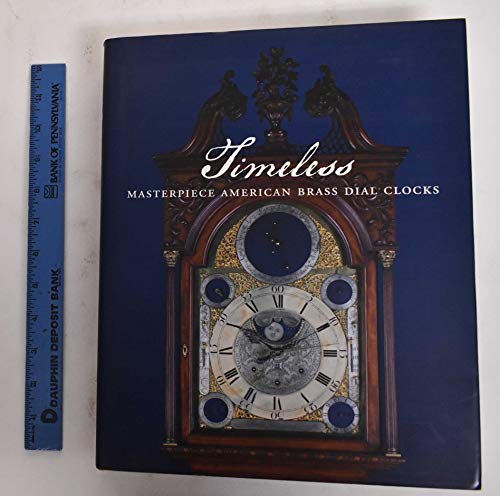

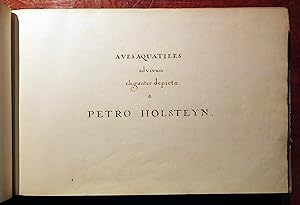
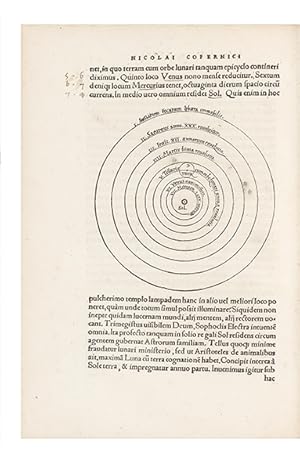
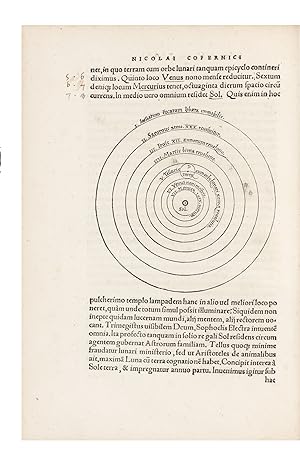

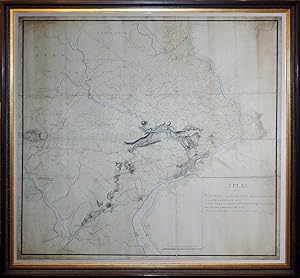

![Seller image for An East Prospect of the City of Philadelphia: taken by George Heap from the Jersey Shore, under the Direction of Nicholas Skull [sic] Surveyor General of the Province of Pennsylvania for sale by Arader Books](https://pictures.abebooks.com/inventory/md/md30901384945.jpg)
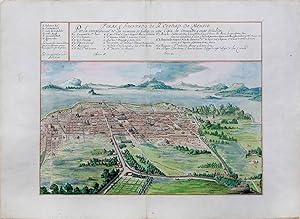
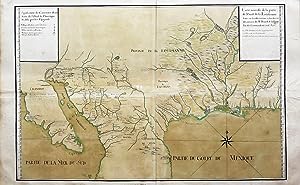
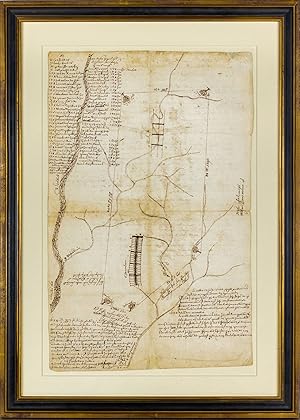
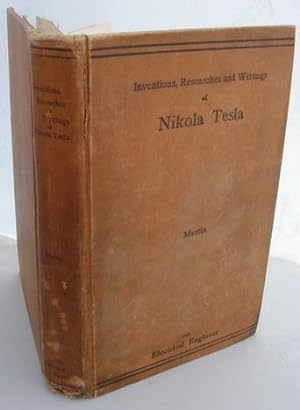

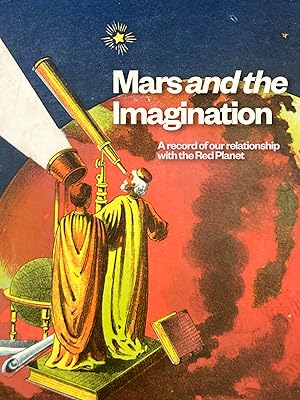
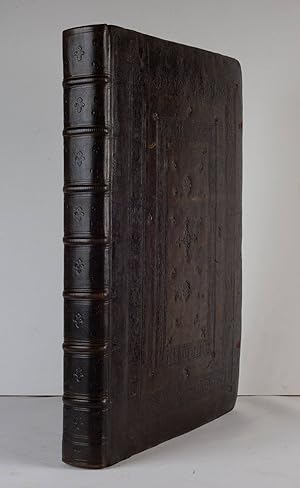
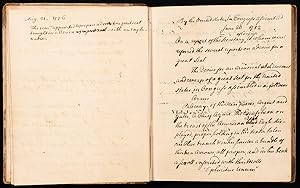
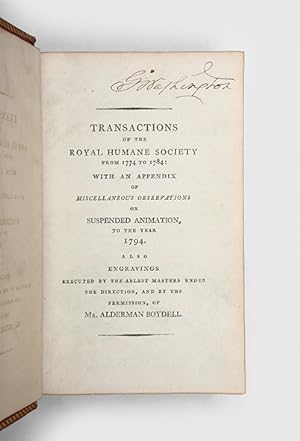
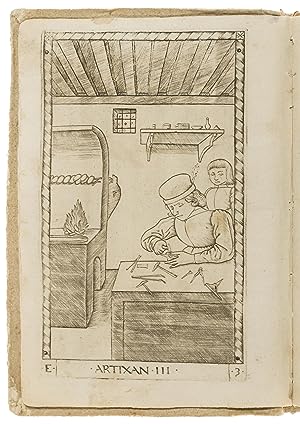
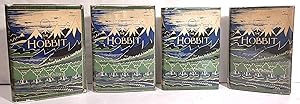
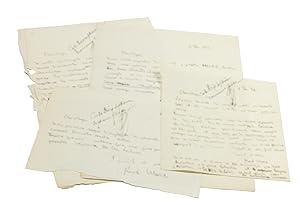
![Seller image for Jam'i Jam [The Cup of Jamshid]. for sale by Antiquariat INLIBRIS Gilhofer Nfg. GmbH](https://pictures.abebooks.com/inventory/md/md31690784689.jpg)